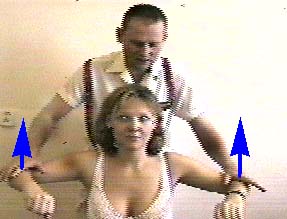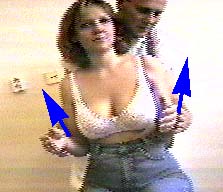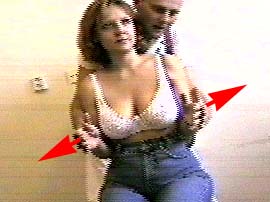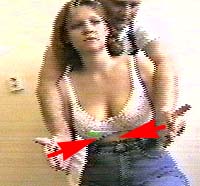m. deltoideus
The examination of the function of most muscles is made at the sitting patient
m. deltoideus |

Picture of the examination of the isometric contraction of m.
deltoideus, a patient makes the abduction from 90 degrees against resistance at
the same time with both arms, a direction of patientīs pressure is
shown by blue arrows
![]() examination of the function of m.deltoideus
examination of the function of m.deltoideus
![]()
m. supraspinatus |

Picture of the examination of the isometric contraction of m. supraspinatus, a patient makes the abduction with arms at the body against resistance at the same time with both arms, a direction of patient's pressure is shown by blue arrows
![]() examination of the function m. supraspinatus
examination of the function m. supraspinatus
![]()
m. infraspinatus |

Picture of the examination of the isometric contraction of m.
infraspimatus, a patient makes the outer rotation with arms at the body against
resistance at the same time with both arms, a
direction of patient's pressure is shown by red arrows
![]() examination of the function m. infraspinatus
examination of the function m. infraspinatus
![]()
m. subscapularis |

Picture of the examination of the isometric contraction of m.
subscapularis, a patient makes the inner rotation with arms at the body against
resistance at the same time with both arms, a
direction of patient's pressure is shown by red arrows
![]() examination
of the function m. subscapularis
examination
of the function m. subscapularis
![]()
Even if the examination of muscles controlling the glenohumeral articulation deals only with a small part of muscles of the shoulder girdle, it is necessary to say that muscles forming the rotator cuff are very frequent originators of problems of a muscular origin in the area of the shoulder joint. Simultaneously most of neurological deficits manifest on these muscles.